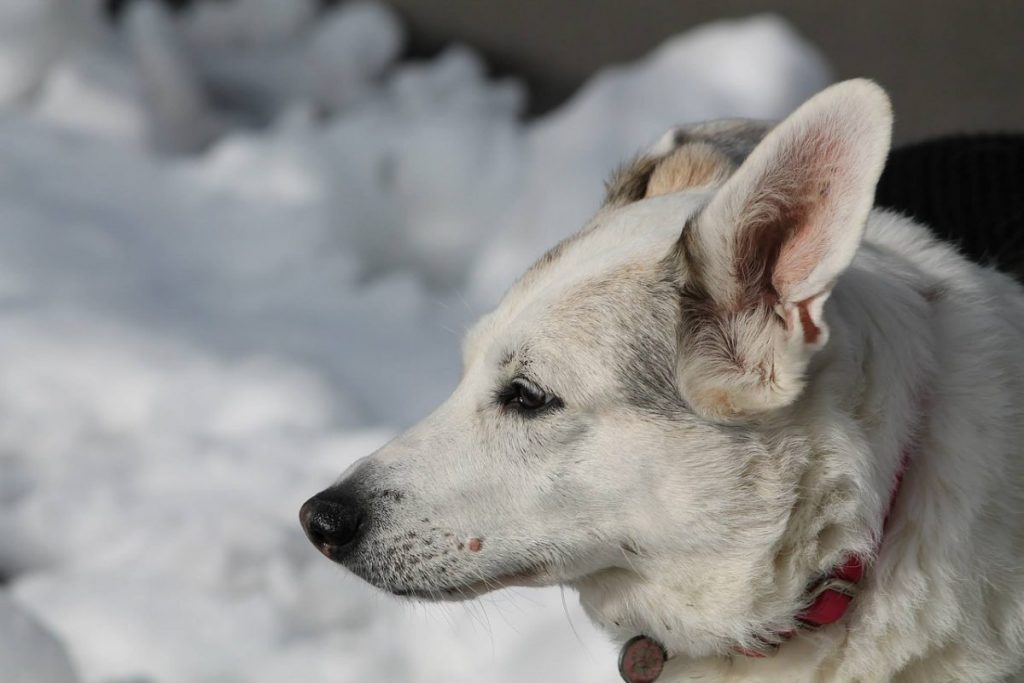If someone were to ask if you knew the location of your dog’s thyroid, would you know where to look? Located in the neck, this gland is a commonly overlooked part of the body with surprisingly large implications on your dog’s well-being. Although relatively small, the thyroid gland has a major impact on the body, affecting many important organs, including the heart, brain, liver, kidneys, and skin.
Found on either side of the windpipe, the thyroid glands produce hormones that are responsible for a dog’s metabolism. These hormones are referred to as T3 (liothyronine) and T4 (levothyroxine). When the gland is not functioning properly, thyroid hormone levels are disrupted and can lead to one of two thyroid diseases: hyperthyroidism or hypothyroidism.
Hyperthyroidism in Dogs: Cause and Symptoms
When the thyroid gland produces too much of the thyroid hormone thyroxine, your dog’s metabolism will kick into overdrive. Known as hyperthyroidism, this thyroid disease is the rarer of the two in dogs and can be caused by:
- Overactive thyroid nodules
- Thyroid cancer, a tumor which causes the thyroid gland to produce more thyroxine
- Response to treatment for hypothyroidism may cause the overproduction of thyroxine
Signs and Symptoms of Hyperthyroidism in Dogs
While hyperactivity is to be expected—especially in an excited pup—hyperthyroidism leads to an abnormally excessive amount, accompanied by:
- Weight loss
- Increased appetite
- Disheveled look
- Vomiting
- Diarrhea
- Increased thirst and/or urine
- Rapid breathing, or difficulty doing so
- Heart murmur or rapid heart rate
Hypothyroidism in Dogs: Cause and Symptoms
The more common of the two, hypothyroidism is a decrease in the production of the thyroid hormone, which happens more often with older age. In addition to old age, hypothyroidism can also be caused by:
- The immune system attacking the thyroid
- Shrinking thyroid
- A tumor of the thyroid gland
Signs and Symptoms of Hypothyroidism in Dogs
Hypothyroidism is not always easy to detect, especially as it tends to occur gradually. Unfortunately, many of the symptoms tend to be attributed to old age. Look for significant behavioral changes in your dog, such as depression, aggression, head tilting, compulsiveness, or seizures. Personality changes are also an indication led by fatigue—an increase in naps, or a decreased interest in exercise or play.
Further symptoms of hypothyroidism in dogs also include the following:
- Weight gain without an increase in appetite
- Cold intolerance
- Slower heart rate
- Hair loss or thinning
- Slower healing of wounds
- Chronic skin infections
- Itching
- Frequent ear infections
Hypothyroidism can also cause weakness, gastrointestinal problems, and even affect your dog’s ability to walk.
Breeds Prone to Hypothyroidism
In addition to old age, there are several breeds more prone to develop this disease, including:
- Golden Retrievers
- Labrador Retrievers
- Boxers
- Cocker Spaniels
- Dachshunds
- Doberman Pinschers
- English Bulldogs
- Great Danes
- Greyhounds
Diagnosis of Canine Thyroid Problems
If your dog is acting differently and you notice a string of the aforementioned symptoms, it’s important to take your dog to the vet as soon as possible. Your veterinarian will conduct a physical test and consider the history of your dog’s health in order to properly diagnose a thyroid disease, whether hyper- or hypo-.
Your dog may also be subject to lab tests in order for your vet to get a complete blood count, biochemistry profile, and urinalysis, along with further endocrine testing. This will help determine T3 and T4 levels for the right treatment.
Treating Thyroid Problems in Dogs
Thyroid disease is very common in dogs. Rest assured, proper treatment is safe and can help enable a full and active life for your dog. The treatment usually lasts for life and involves a synthetic form of the thyroid hormone, adjustable by the vet based on your dog’s progress. The most common form of treatment is L-thyroxine, a thyroid hormone replacement, and can come in either liquid, tablet, or chewable form.
Many of the initial symptoms will resolve within weeks to a few months, but it’s important to get your dog checked based on your vet’s recommendations and to continue proper dosage. Left untreated, a thyroid disease will affect the quality of your dog’s life. For additional support, ask your veterinarian how the addition of full spectrum hemp dog treats in your dog’s diet might help. It is important to explore all your pets options on how to best support them during this stage of their life.
Preventing Canine Thyroid Problems
Although thyroid diseases are highly common in dogs, very little is known about prevention. Veterinarians usually wait to diagnose animals showing obvious signs of thyroid disease before assigning treatment.
Recently, however, holistic practitioners have looked to the “gray zone”—the area between optimal health (the white zone) and the point when the disease takes over (the black zone)—to catch early onset. A holistic veterinarian will be open to send out thyroid panels to analyze and monitor blood values to catch the disease early enough in order to administer treatment.







